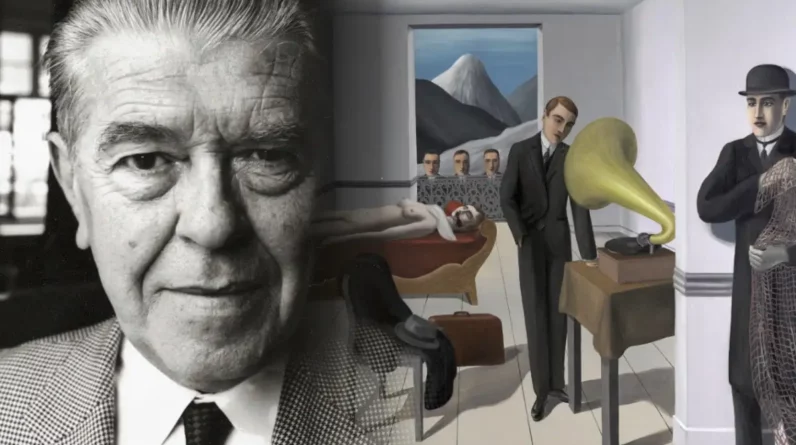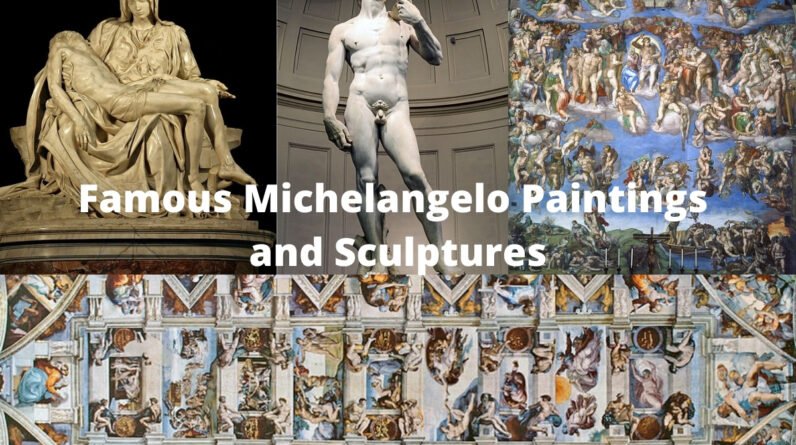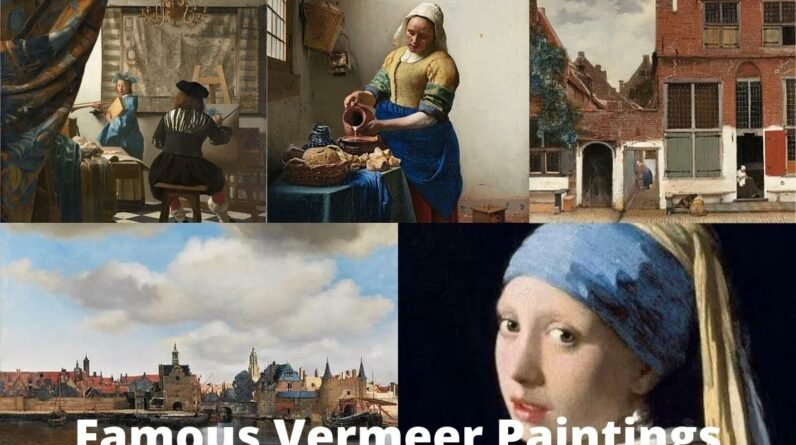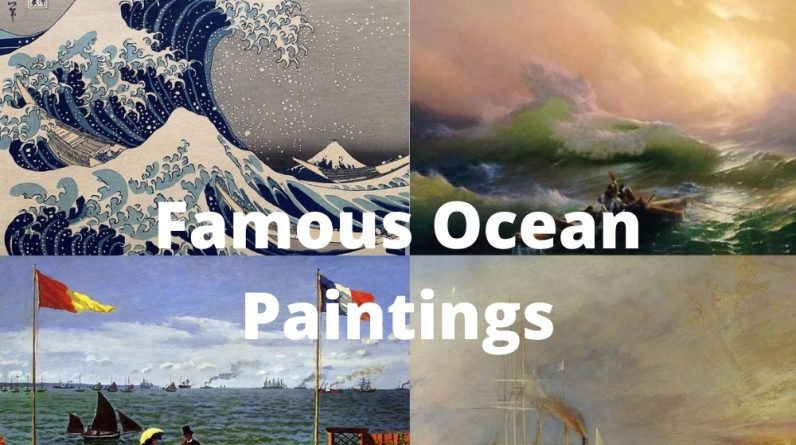
Famous ocean paintings have a dual nature and reflect the duality of the sea itself. There are paintings of the sea by famous artists such as Claude Monet, Katsushika Hokusai, Winslow Homer and so on. This article provides an overview of the famous ocean paintings.
The Great Wave by Katsushika Hokusai
The Great Wave by Katsushika Hoakusai is one of the world's most famous works and is often considered the most recognizable work of Japanese art. The title of this painting is indicative of the powerful wave that threatens to break. Hokusai used a new pigment called Prussian Blue which was imported through England and China at the time. It represents the inescapable force of nature and human weakness. The print was a popular choice among Western art patrons and became a popular source of inspiration for many artists. In particular, the Dutch impressionist painter Vincent van Gogh and the French impressionist composer Claude Debussy were both inspired by Hokusai's paintings.
If you want to know more about this painting, check out: Interesting Facts About The Great Wave Off Kanagawa
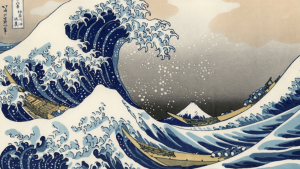
The Ninth Wave by Ivan Aivazovsky
The Ninth Wave is a painting by Russian artist Ivan Aivazovsky. The painting depicts the sea after a storm has left people stranded on a ship. It is a work of Romanticism that is mature, yet retains its populist appeal. The Ninth Wave is a great example of Aivazovsky's mastery of the medium.
The theme of The Ninth Wave is the nautical tradition of growing waves and death. The scene is filled with people clinging to a twisted mast in desperate search of life. The flickering light of the sun through the clouds provides a brief respite from the darkness. The Ninth Wave is a powerful and highly readable work, and the title is a fitting one.

The Gulf Stream by Winslow Homer
“The Gulf Stream” is one of the most iconic paintings by American artist Winslow Homer. It depicts a black man struggling against the waves of the Gulf Stream. Homer often vacationed in Florida, Cuba, and the Caribbean, and often painted the sea and its inhabitants. The painting is one of his last statements on the subject. It is also considered a synopsis of Homer's life.
The stranded man in the middle of the sea in “The Gulf Stream” by Winslow Homer is a symbol of the sea's power. The man's calm and peaceful expression suggest that he is not frightened by the sharks. But the painting's title implies that the man is alone, and thus in danger of being swept away by the sea.

Impression Sunrise by Claude Monet
Claude Monet created Impression Sunrise in 1881, a work of art with an unmistakable mood and style. The orange color of the sun stands out against the grey backdrop, but is not more visible than other colours. In this black-and-white view, the sunrise is almost invisible compared to the rest of the landscape. The contrast between colour and luminance is one of the main reasons for this painting's eerie quality.
The subject matter of Impression, Sunrise by Claude Monet reflects various cultural influences. Throughout the nineteenth century, landscape paintings depicting sunrises and French ports were popular. Monet's choice of subject matter is partially based on his personal background. Le Havre was his hometown, and he had connections to the port. As a result, the painting is more than just a reflection of the port's importance as a trading hub.

The Monk by the Sea by Caspar David Friedrich
The Monk by the Sea by Casper David Friedrich depicts a lonely monk on the shores of Rugen Island looking out to sea. Friedrich was an artist and critic who challenged the conventional ideas about art, and his paintings reflect this in their boldness. Friedrich's painting is a striking example of the influence of nature on his work. He believed that nature is a book of revelation, and used it as a medium to reveal the will of God.
The monk is situated over a third of the way into the painting from the left side, in a 1:1.6 ratio. This ratio is found in many works by other artists in Western art, and Friedrich is no exception. The composition is also an example of the artist's interest in the mystical. The monk's pose is reminiscent of the Buddhist meditation method. Moreover, the monk's posture suggests a state of contemplation, as the monk stares out into the darkness.

The Storm on the Sea of Galilee by Rembrandt
This painting of Christ and the disciples on a stormy sea was one of Rembrandt's most famous works. The painting features an exquisitely balanced use of chiaroscuro, or contrasting light and shadow, to create the impression of hope and impending doom. The storm and the disciples' attempts to control the boat are a fascinating example of the artist's technique.
One of the greatest aspects of this painting is its depiction of a moment in which Jesus calms a storm. He does so by pointing his finger upward to the heavens, which he deems to be the source of light. The other passengers on the boat are mainly concerned with the storm and the boat's safety, while only Jesus has faith in the power of light and can remain calm in the midst of it.
The painting also shows the light from heaven that Jesus sheds. This light represents Jesus, the Christ, the Son of God, the Light of the World, and the Prince of Peace. The disciples at Jesus' feet are drawn to the light and may even reach out to touch him. The disciples may also be drawn to the light. The storm itself is a powerful symbol of Christ's passion and death, and is one of Rembrandt's best-known works.

Becalmed off Halfway Rock by Fitz Hugh Lane
Becalmed off Halfway Rock by FitZ Hugh Lane is an outstanding example of 19th century American art. Lane used light to depict the sea and ships in vivid details. Lane, born as Nathanial Rogers Lane and later as Fitz Henry, spent his childhood using crutches. Lane learned to paint at a local lithographic shop and then began working on his own paintings. Despite his handicap, he studied drawing while living near Gloucester Harbor. In 1832, he briefly worked for a lithographic firm in Gloucester. He moved to Boston for formal training and apprenticed under William S. Pendleton. His first paintings were seascapes and scenic views of the coastline.

La Terrace de Sainte Adresse by Claude Monet
“La Terrasse de Sainte Adresse” is one of Monet's best-known works. The painting depicts a terrace overlooking the river, with two figures in the foreground: a gray-bearded gentleman and a fashionable woman. While the figures in the painting remain distant, one might guess that they represent Monet's family. Interestingly, the woman in the foreground is Monet's cousin Camille Doncieux, the daughter of Monet's first wife.
The painting is a prime example of Monet's use of color and form to convey the feel of a picturesque seaside location. Unlike the gauzy landscapes of the nineteenth century, this painting is not a typical seascape. In contrast to most seascapes from this time, this painting depicts a beach facing northwards toward the town of La Heve, or “La Heve at Low Tide.” The two paintings were both exhibited in the Salon of 1865, though there are slight changes to the view. For instance, the horizon line in Sainte-Adresse is slightly higher than in La Heve at Low Tide, and the cape is placed more centrally in the composition, giving more prominence to the beach in the foreground.
Monet's style was a result of the influence of British painters Joseph Mallord William Turner and John Constable. These artists worked quickly in the open air to capture the light and colour of the scene. Consequently, Monet's paintings tended to be more realistic than their predecessors. However, the technique of creating shadows and using colour contrasts was a major influence on his style.




